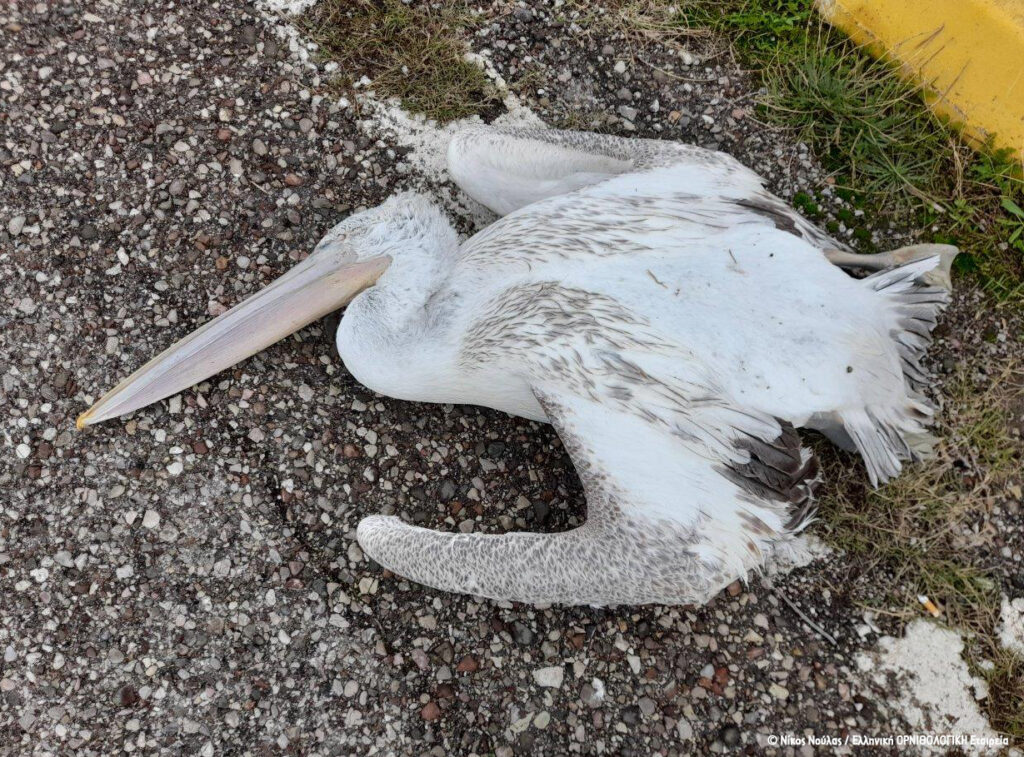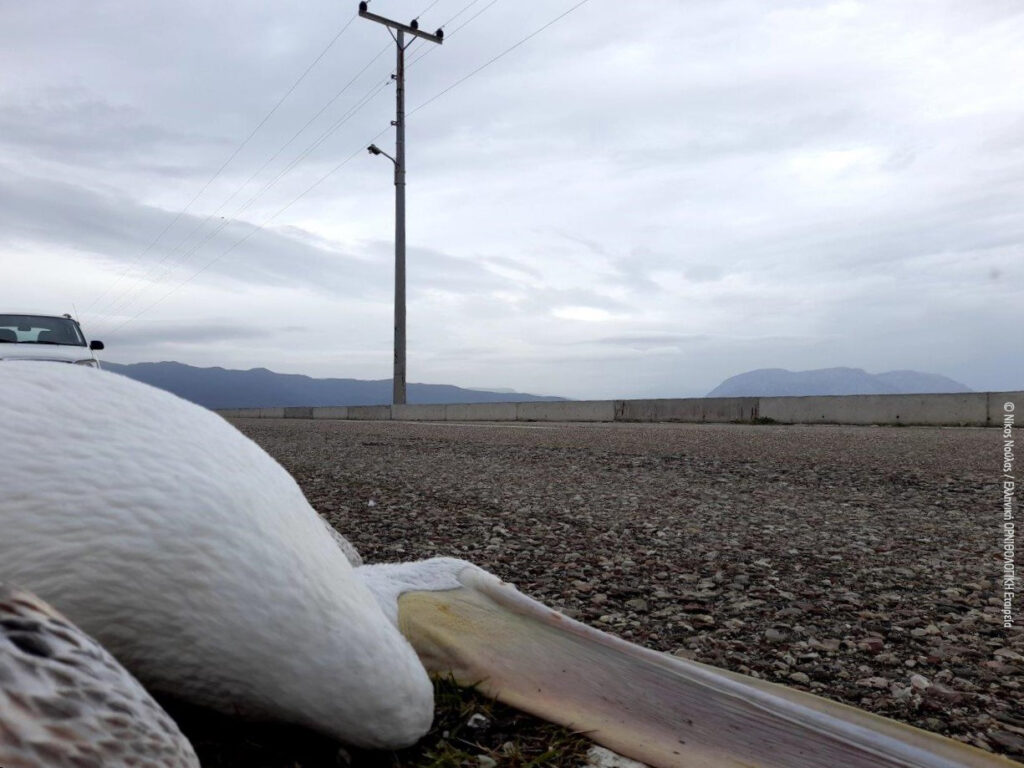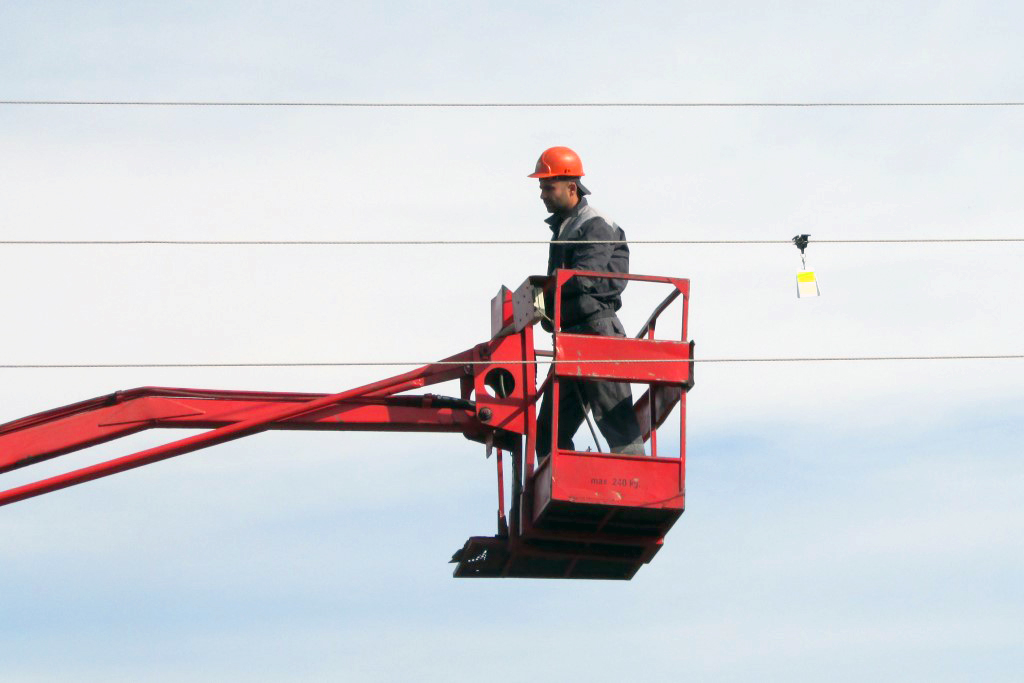Last week a Dalmatian pelican was found dead due to a collision with the power lines in the area of Tourlida, in the Messolonghi Lagoon. 50% of the power transmission lines within the National Parks of Messolonghi Lagoon and Amvrakikos Gulf Wetlands are dangerous for Dalmatian pelicans and other bird species that breed in these areas, according to a study carried out by the Hellenic Ornithological Society (HOS) as part of the Pelican Way of LIFE initiative.

In the framework of the study, the riskiness of the overhead power transmission networks was assessed in selected locations of the two protected areas close to the feeding and breeding territories of the Dalmatian pelicans, where bird deaths due to impacts of power lines have been recorded in the past, including the recent finding.
Of the total 14.7 km of medium voltage network examined, 7.4 km were found to be dangerous for many bird species and especially for larger water birds such as Dalmatian pelicans. According to the estimations, the annual killing of Dalmatian pelicans by these networks constitutes at least 4% of the population of the species in the examined areas. It is worth noting that the two National Parks host significant colonies of the western subpopulation of the Dalmatian pelican, which is considered extremely vulnerable due to its small size.

Tens of millions of birds are estimated to die every year in Europe due to collisions with energy transmission networks. Impact, which as a cause of death differs from electrocution, affects less agile birds or birds that migrate at night and fly in groups at a height of 20-50 meters. Especially during the night hours, the wires are not visible enough so many birds bump into them which results in serious injury or even death.
According to the International Action Plan for the Dalmatian Pelican, killing by the collision with the overhead power lines is a significant threat for these birds that needs to be addressed immediately. So one of the objectives of the Pelican Way of LIFE initiative, aiming for the conservation of the Dalmatian pelican, is to reduce the risk of such kind of impact on the species in critical areas through the installation of special bird diverters that make the cables more visible, along at least 10 kilometers of energy transmission lines in Romania, Bulgaria, and Greece.

On the occasion of last week’s discovery of one more dead Dalmatian pelican due to a collision with power transmission lines in the area of Tourlida, in the Messolonghi Lagoon, ecologists are reminded of the need to take immediate and effective measures to mitigate this critical threat to the pelicans and other birds in Greece and other countries. Based on the results of the recent study, HOS deems it necessary to evaluate the cables in the remaining areas within the Special Protection Zones (Natura 2000 areas), while the team is already in consultation with the Hellenic Electricity Distribution Network Operator and the competent local authorities regarding the need for immediate installation of special bird diverters on dangerous energy transmission lines.
HOS also calls to the residents of the area of the Messolonghi Lagoon and the Amvrakiko Wetlands to inform the team in case of spotting dead birds less than 10 meters from power transmission lines, by sending the place where the bird was found, as well as relevant photos, to info@ornithologiki.gr or call to 210 8228704 & 210 8227937.